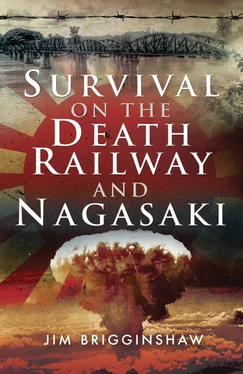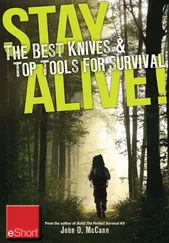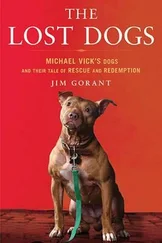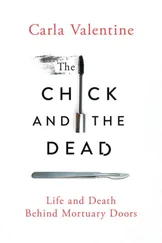Those who could move dived out of their beds. Once they were outside, they looked for slit trenches, but there were none. Nobody expected a clearly-marked prisoner-of-war hospital to be bombed.
However, the plane didn’t attack. After a few circuits, it flew off and the men returned to their hospital beds. Later, the sound of explosions in the distance indicated where the bombs had been dropped.
The next day, a work party was sent from the hospital to a Japanese petrol dump about five miles away in the jungle. The American bombs that were meant for the dump had missed, but only by a hundred yards or so.
Bodero was among a couple of hundred prisoners sent to shift thousands of drums of petrol from the dump. The workers, many of whom were taken from their hospital beds, were at it for twelve hours without a break until the job was completed.
In July, the Thambuzyat hospital camp had another bombing alert, this time in daylight. Four four-engined bombers flew over, travelling west to east, again too high to see whether they were Allied or Japanese planes. The planes disappeared to the east, but soon returned. Now flying considerably lower, the white stars on their wings and fuselage clearly identified them as American.
Jim Bodero and Welsh sergeant-major Taffy Eckland watched from outside one of the huts on the eastern extremity of the camp as the planes circled. When it was obvious what was going to happen, Taffy yelled to Jim, ‘This time the Yank bastards are going to bomb the camp. Go for cover, boyo.’
Cover was scarce, and all they could find was a shallow drain filled with foul-smelling water outside one of the huts. They dived into it.
The bombers flew lower, now down to about a thousand feet, and continued to circle.
The Japanese guards began firing at them with their rifles. It was the only opposition they could muster because the hospital had no anti-aircraft guns.
The aircraft flew east, turned, and approached in a direct line, four abreast. As they came closer, they separated and opened their bomb-bay doors.
Lying looking up at them, Bodero saw the bombs-which he estimated to be five-hundred-pounders-leave the planes, tumble down and hit the centre of the camp, not far from the drain where he and Taffy were huddled. Timber, dirt and debris filled the air as buildings were blown apart.
The cries of the wounded stung the two men into leaving their cover and running to help. As they did, the compound erupted with more ear-splitting explosions. Fountains of earth shot skywards from delayed-action bombs that had been buried in the soil on impact and were now detonating.
An Australian officer who saw Jim and Taffy in the danger zone shouted, ‘Get the hell out of there!’
As they ran, they had to hurdle a deep trench dug into the ground-the symbolic cross that everyone had imagined would keep the hospital safe from an air attack.
The four planes continued to circle the camp, and then swooped down, firing their two-inch cannons. Bullets flew around the compound and water cascaded out of holes that had appeared in the hospital’s tanks.
Bodero looked for protection, but all he found to hide behind was an anthill, which wasn’t much protection against bullets and bombs. Still, he crouched behind it with the childish notion that if he couldn’t see the bomber pilots, they couldn’t see him.
He watched a plane come in and drop smaller bombs right on the cross, so close that he was covered in earth from the explosions.
Eventually, the bombers turned and disappeared to the west.
For a few seconds, Bodero couldn’t believe he’d survived. Shaking off the dirt and debris that covered him, he crawled out from behind the anthill, past a Dutch prisoner who’d had his head blown off and a dead Englishman.
Back in the hospital, he and Taffy discussed what had happened. Why would the Americans bomb a clearly marked prisoner-of-war hospital?
Jim tried to excuse them. ‘They could have mistaken it for the railway workshops. They’re not far away.’
‘Don’t tell me the bloody Yanks don’t know what a red cross symbol is’, Taffy snorted. ‘The bastards even machine-gunned the area where the cross was.’
‘ They might have taken it for a gun emplacement. Or they might have been trying to stop the Japanese rifle fire.’
‘Balls’, Taffy growled. ‘If they had enough intelligence information to know where the petrol dump was when they attacked it the other night, they must have known about the hospital camp. If they were trying to get the railway workshops, as you reckon, they must be bloody awful bombers. They didn’t touch them, but they made a hell of a mess of the hospital.’
It was a terrible thing to happen. Two hundred prisoners died in the bombing, while not a single Japanese was killed, nor had the Japanese headquarters in the camp been greatly damaged.
Bodero was sent with a work party to fill the bomb craters in the road between the hospital and the workshops. Guarding the prisoners was a short, squat Japanese with a stringy ginger moustache that was waxed at the ends. The comical facial decoration was highly unusual for a Japanese.
Ginger Moustache sat holding his rifle and bayonet as he watched the prisoners work. He called Jim over. ‘British number one’, he said, giving him the thumbs-up.
Jim didn’t argue that the attack had been American, not British. He shook his head. ‘British come over… boom, boom, takusan shigoto, plenty work for POWs. British number one, no bloody way.’
‘British bargoose,’ Ginger Moustache said, using the Malayan word for ‘good’.
Jim was suspicious now. He could see the guard was trying to get him to praise the bombing so that he’d have grounds to give him a beating. He dropped the subject.
Having two hundred prisoners killed in the bombing raid was a disaster, but the appearance of Allied bombers gave the survivors new hope that the tide of the war was turning. They figured, though, that if the hospital was going to be bombed, they might be safer somewhere else. It wasn’t much of a hospital anyhow, because it had no medical supplies. The only benefits were a roof that didn’t leak and work that wasn’t as hard as that on the railway line.
The Australian doctor in charge of the Thambazyat hospital, Major Ted Fisher, was given a work quota by the Japanese. They ordered him to send fifty men back to work on the railway line each day. They would be replaced by fifty sick men from the railway camps, a case of sick men taking the place of sick men.
Major Fisher knew that those he was sending back to work were not fit enough, but he had no option-the quota system was forced on him.
Another doctor at the hospital, Major Hobbs, saw Fisher massaging the neck of an Australian prisoner one day and told him, ‘I bet that bloke would like to be in your position, Ted.’
‘Why would he like to be in my position? I’ve got a shit of a job,’Fisher said. ‘I’m sending the poor bugger back to work on the line.’
Hobbs grinned. ‘That’s why he’d like to be in your position. Then he’d have his hands around your neck.’
Jim Bodero weighed seven stone when he was sent from the hospital at Thambuzyat back to work on the railway. The line had progressed four kilometres while he was away, and it was now the Thirty-Kilo camp.
Still weak from the dysentery that had put him in hospital, he was detailed to the kitchen fatigue party, cutting wood for the fires and carrying water. The work was heavy for sick men. Water was carried in forty-four-gallon drums cut in half and wired to a bamboo pole with a man at each end, and woodcutting involved felling tough-as-nails teak or any other timber in the jungle and carrying it back to camp in their arms.
The fatigue party had no guards, the jungle being deemed sufficient to prevent escapes. Although exhausted by the work, the men regarded it as much better than the Death Railway and its vicious guards.
Читать дальше












